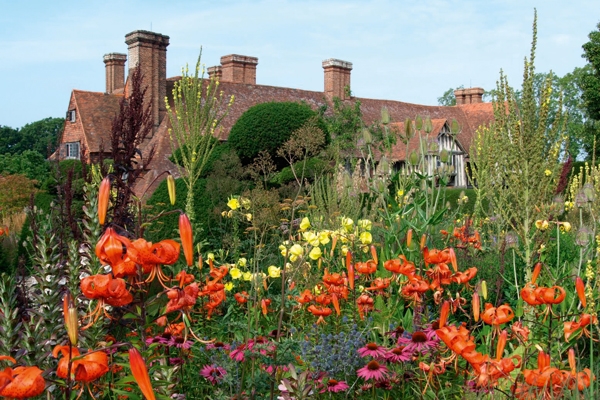‘Write about the best English gardens,’ says the email from the deputy editor, ‘or what makes a good garden?’ That’s a bit like saying, ‘write about the best paintings, or the best music.’ Beauty is in the eye of the beholder and we now behold so many varieties of English garden that it is hard to tell what Englishness is any longer. But it is probably safe to say that the trend is no longer lavender and roses and formal enclosures of yew and box, nor grassy parks with statues and studied references to high learning.
When Kent leaped the fence in the 18th century and saw all nature as a garden, the whole world clapped. Pevsner called it ‘by far the greatest contribution England has made to aesthetic theory’. But to-ing and fro-ing with nature has always been a feature of our gardens, so the reaction arrived with the Victorians, who put the wild behind the fence again. After them, the arts and crafts designers — starting with Jekyll and Lutyens and moving through to Hidcote and Sissinghurst — caged their flowers in rooms outdoors. Now nature is back inside the pale, with wild meadows and grasses dominant and high-maintenance horticulture falling out of favour. English gardens have seen long bouts of Romantics versus formalisers, and I know which I am always for. Not a nature reserve — which is also currently riding high — but a place on the brink of disarray.
Vita Sackville-West said a garden should never look definitive or inevitable and her formal boundaries were always blurred. Minimalists of today make beautiful objects to look at but not places where you want to lose yourself. Blurring is verboten. Christopher Bradley-Hole’s latest, at Chelsea last week, represented the English Landscape seen through a Japanese prism.








Comments
Join the debate for just £1 a month
Be part of the conversation with other Spectator readers by getting your first three months for £3.
UNLOCK ACCESS Just £1 a monthAlready a subscriber? Log in